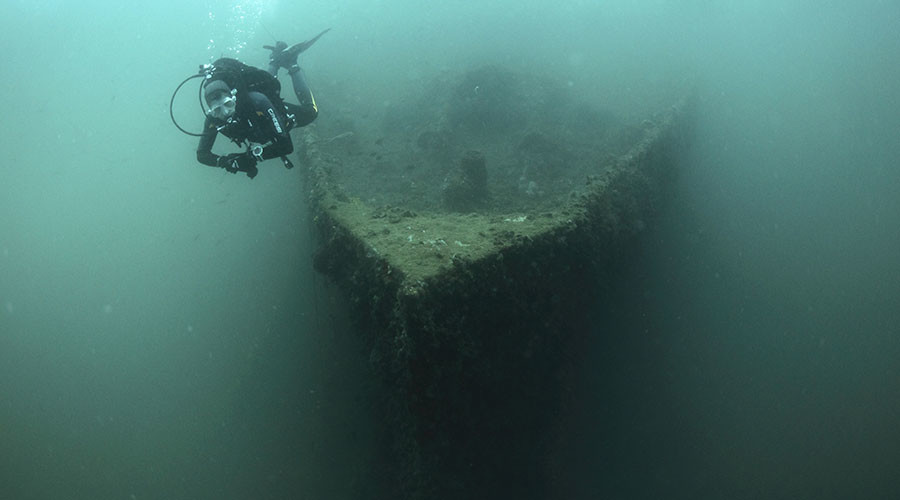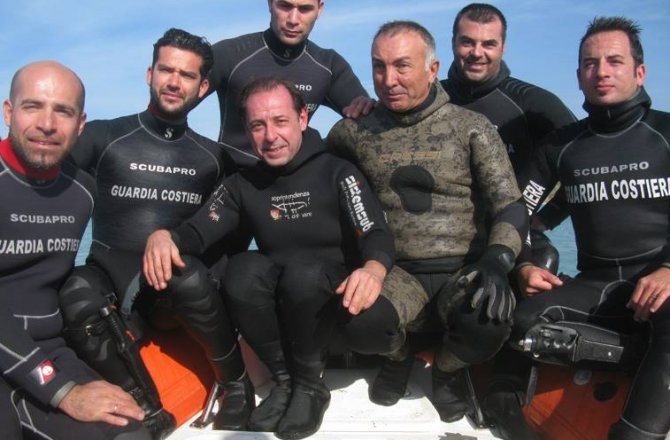
PHOTO: RT.com
SICILY ITALY – A team of Italian divers have recovered a cache of rare metal that ancient people thought was originally forged in Atlantis.
According the Greek mythology, orichalcum was invented by Cadmus, the founder of the Phoenician Empire and the first king of the Greek city of Thebes. Not much is known about where it really came from. According to Plato, the answer is Atlantis. In Plato’s Critias, he claims that orichalcum was mined in Atlantis, and more precious than silver. Plato describes Atlantis’ temple to Poseidon as being comprised of a three-layer wall. One layer was made of brass, the second of tin, and the third, outer layer “flashed with the red light of orichalcum”. The interior of the temple was covered in the precious metal, and in the center, Plato wrote that there was a gigantic stele made from orichalcum, with the laws of Poseidon inscribed upon it for all to see.
In 2005, a group of divers discovered a shipwreck 1,000 feet off the coast of Sicily. Inside, they found 39 orichalcum lumps – a horde previously unrivaled. This year, inside the same ship, the divers have found even more ingots of orichalcum, enough to add up to an impressive cache of 86 ingots. This is completely unprecedented.
“The ship dates to the end the sixth century B.C. It was likely caught in a sudden storm and sunk just when it was about to enter the port.” Sebastiano Tusa, archaeologist and Sicily’s superintendent of the sea explained.“The waters [near Sicily] are a priceless mine of archaeological finds.” – Italian archaeologist Adriana Fresina.
The researchers handling the find believe the ship was probably from Greece or Asia Minor to Gela, a city in Sicily renowned for its artisan workshops. The orichalcum ingots, had they made it there, would have been sold to one of the workshops and turned into jewelry or household decorations.

One of the orichalcum ingots. [PHOTO: bluewin.ch]
“The presence of helmets and weapons aboard ships is rather common,” Tusa said. “They were used against pirate incursions. Another hypothesis is that they were meant to be an offer to the gods.”
In the coming year, archaeological teams from Sicily and Italy plan to continue to excavate this extremely valuable shipwreck. Who knows what else they might find?


